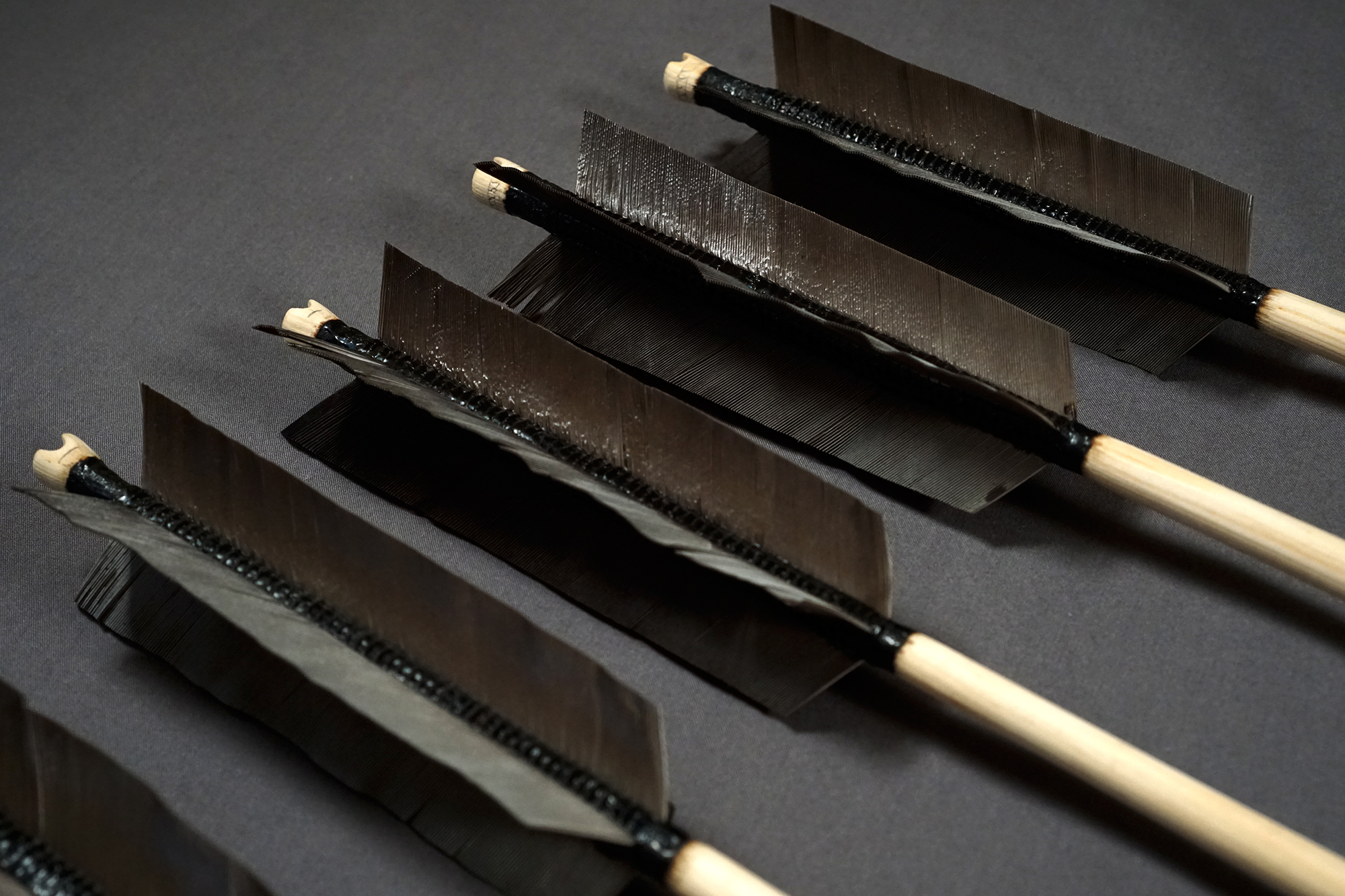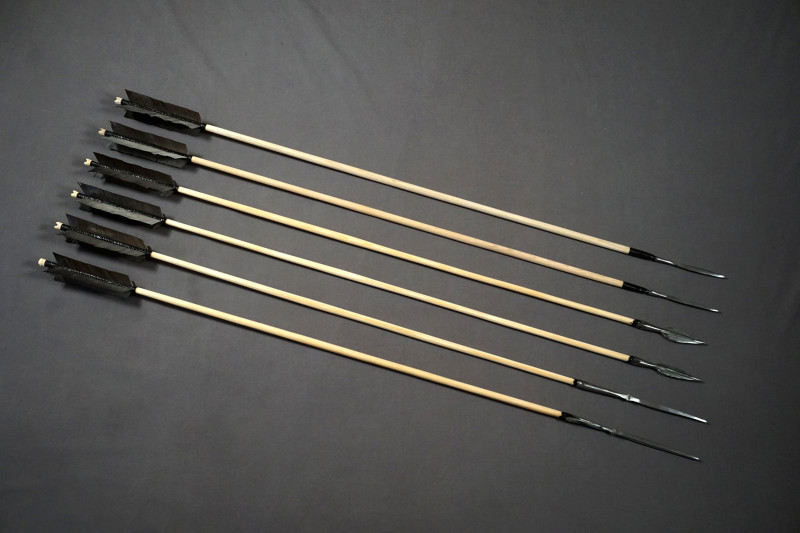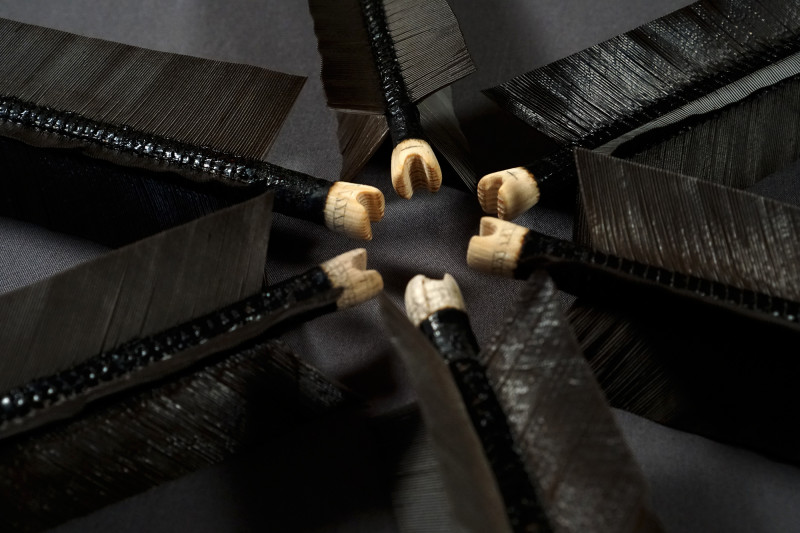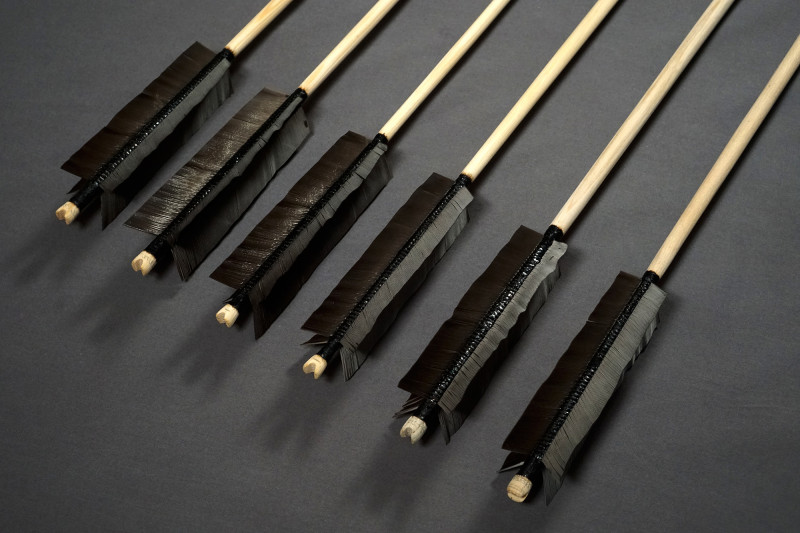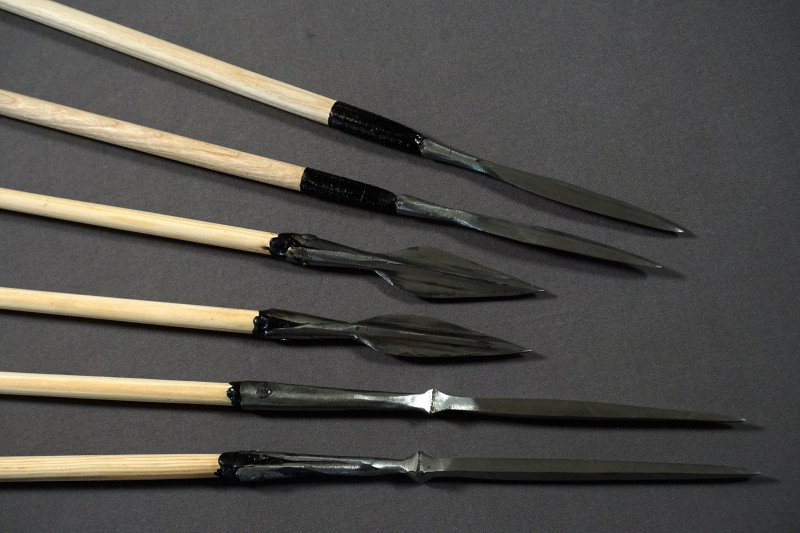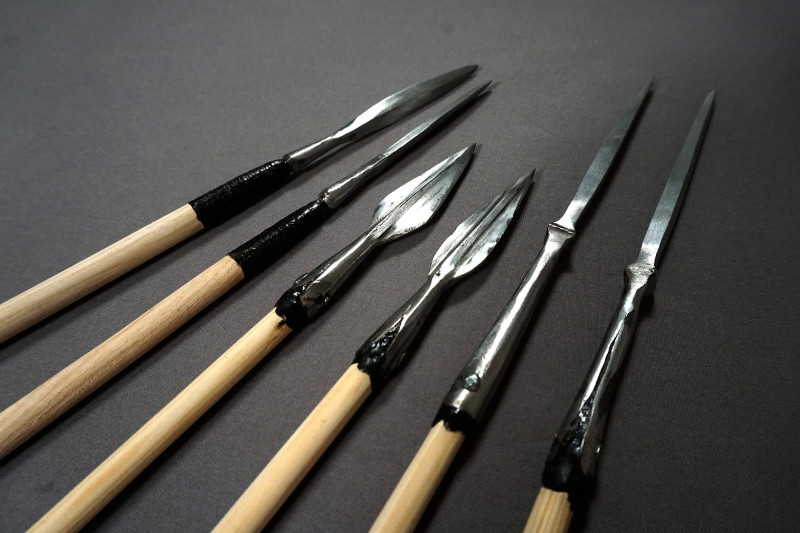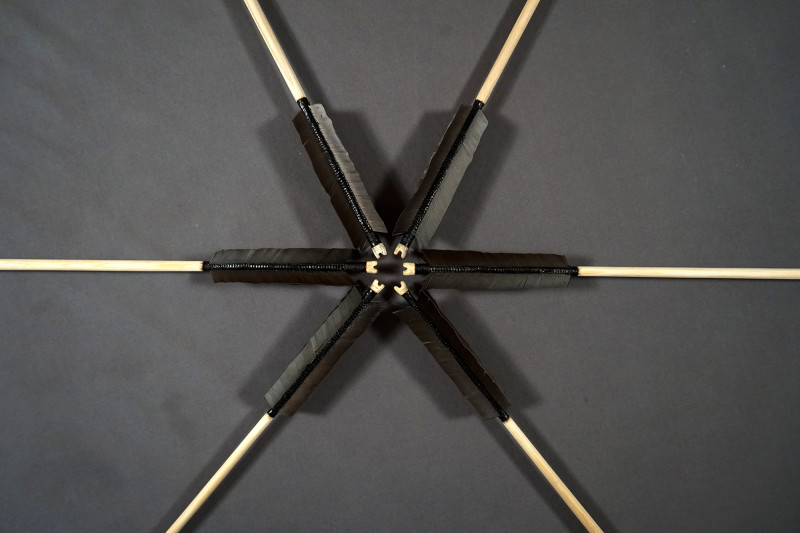Nydam Bog is considered one of the most richly sacrificial sites in our history. A large number of arrow shafts and points are among the finds, which have been very well preserved due to the favorable storage conditions in the bog. This allows a very accurate reconstruction of arrows, which, compared to other historical arrows, have some peculiarities.
While the pine and ash shafts are barrelled, as is often the case, the offset area of the feathers in the shaft is clearly distinguished from any other arrow finds from related regions. This has the consequence that the birch pitch and the flax winding, with which the feathers were fastened, evenly blended into the remaining shaft. Without any edge, a smaller pitch abrasion and larger protection of the feather winding is ensured. The nocks are Y-shaped and are marked with ownership marks. For the fletching, several big-bird-feathers are possible, examinations on the underside of the keel-skin (the keel was not split, but the feathers were taken off from the keel) indicates feathers of the sea-eagle. Due to today's species protection regulations, optically similar feathers of the greylag goose are used for the reconstruction. Another striking difference to other historical arrows is the frequent quadruple fletching of Nydam arrows.
Although bone tips were also found, iron tips were mainly used. In the structure these differ in grommet and thorn points, which brought a different kind of attachment.
Tip reconstructions by Hector Cole.
FREUDENBERG Mechtild / GEBÜHR Michael, Nydam und Thorsberg. Opferplätze der Eisenzeit. Begleitheft zur Ausstellung Schleswig 2000, pp. 22-25.
PAULSEN Harm, Bögen und Pfeile. In: BEMMANN Güde / BEMMANN Jan, Der Opferpflatz von Nydam. Die Funde aus den älteren Grabungen: Nydam-I und Nydam II. Neumünster 1998, pp. 387-428.
